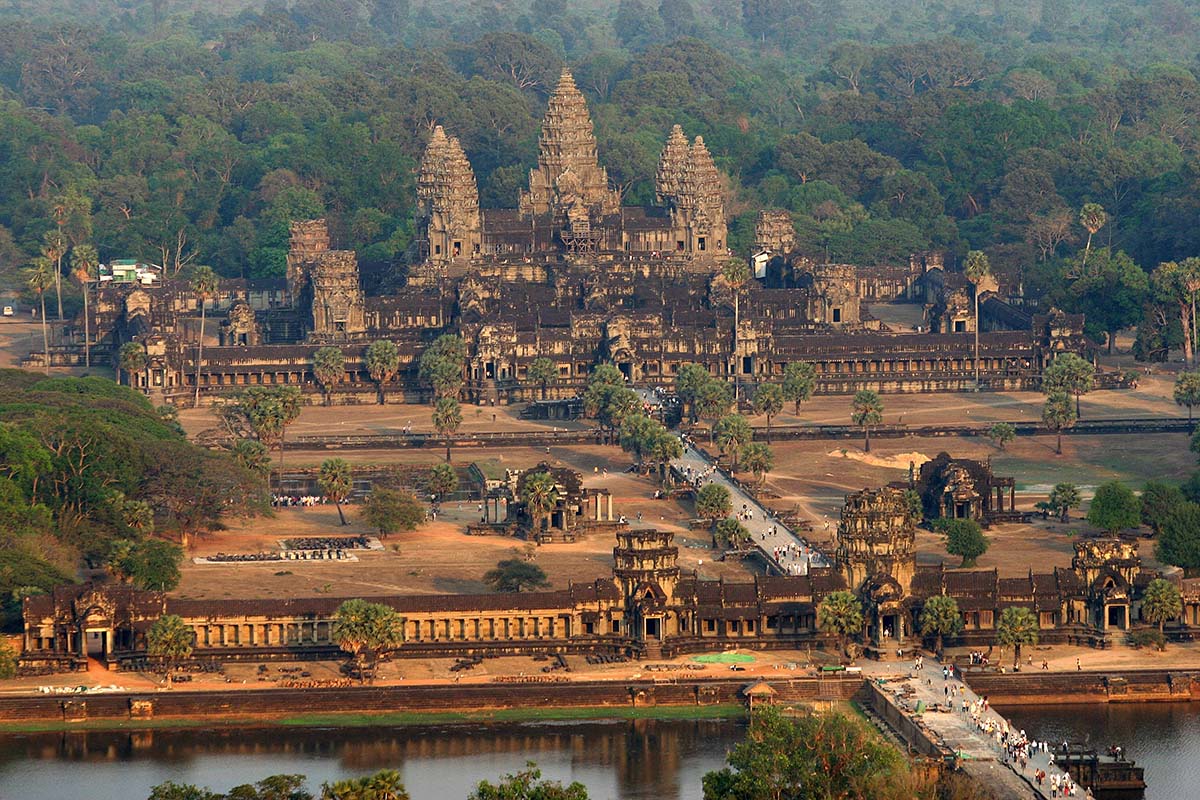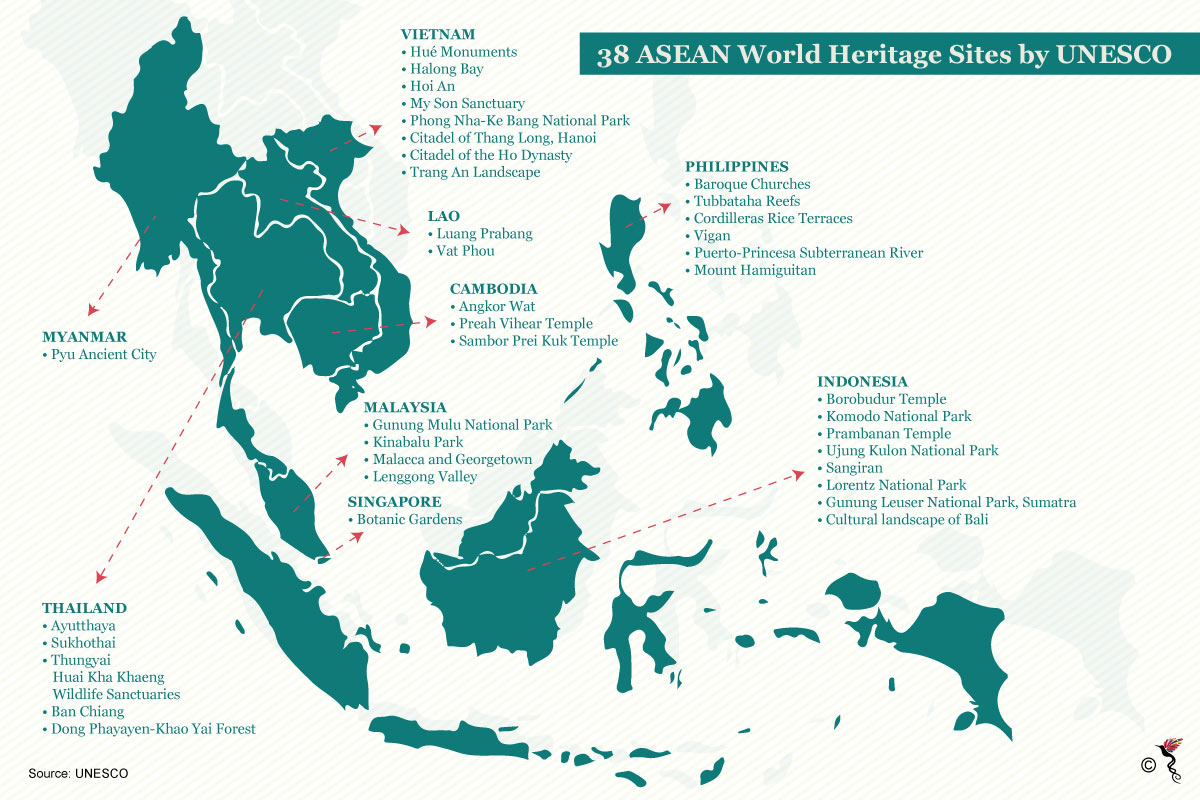Southeast Asian countries are innately blessed with the diverse culture and heritage sites that they could offer to tourists from all across the world. Every country within the region will entice you with even more stunning nature, architecture and ethos. UNESCO (United Nations Educational, Scientific and Cultural Organisation) has gazetted 38 heritage sites in Southeast Asia under its list of World Heritage Sites (WHS) for their unique cultural values, historical background and otherworldly landscapes.
Some of the famous sites within the region include Thailand’s historic city of Ayutthaya, Singapore’s colonial-inspired Botanical Gardens and Indonesia’s vast Prambanan Temple compounds. Be it temples, historic ruins or terraced rice fields and tropical rainforests, they are capable of attracting thousands of visitors from every corner of the world. These legacies do not only serve as reminders of our ancestral past, but are also becoming an important driver for tourism in Southeast Asia – through its varied cultural diversity and geographical features.

In this picture taken on March 2, 2007, an aerial view of the Angkor Wat temple in Siem Reap province some 314 kilometers northwest of Phnom Penh, Cambodia. (AFP Photo/Tang Chhin Sothy)
Apart from being merely tourist attractions, some of these sites have also been made famous through pop culture where they were used as film sets in several Hollywood blockbusters. For instance, the 2001 fantasy thriller "Lara Croft: Tomb Raider" featured the Ta Prohm temple ruins in Angkor Wat – the capital city of the ancient Khmer empire in Cambodia and the largest religious monument in the world. Similarly, most parts of "Kong Skull Island" were shot on the banks of Halong Bay, Vietnam.
ASEAN nations, particularly Indonesia, Vietnam, the Philippines and Thailand have taken big steps towards obtaining the WHS status for their heritage sites. Collectively, these four countries hold 27 out of the 38 WHS sites in Southeast Asia on UNESCO’s list.

List of World Heritage Sites in Southeast Asia. Source: UNESCO.
Contribution GDP of WHS
According to the World Travel and Tourism Council (WTTC), these sites are forecasted to contribute 563 billion dollars – with an annual average growth of 5.7 percent – to ASEAN's GDP by 2027. As a result, the travel and tourism sector in the region will play a vital role in helping individual member states grow by creating jobs and enabling integrated regional development. As stated in the ASEAN Tourism Strategic Plan 2016-2025, ASEAN is expected to welcome 152 million international tourists by 2025 and 187 million by 2030.
Conservation of World Heritage Sites in Southeast Asia
As heritage sites are the reflection of cultural memoir and an avenue for tourism revenue to the region, it is a collective responsibility for the bloc to continually preserve and maintain the authenticity of these locations. Some threats that these sites face include climate change, sudden ecological events, pollution and development, amongst others.
According to an e-mail correspondence with Kim Worm Sorensen, Team Leader for Biodiversity Conservation and Management of Protected Areas in ASEAN, he stated that in order to preserve these sites governments and the community should follow UNESCO'S recommendations. In the World Heritage Convention, a document founded in 1972 which enlists concepts of nature conservation and the preservation of cultural properties, it was discussed and agreed that every involved State Party should pledge to not only conserve World Heritage Sites within their territory, but to also protect and promote its national heritage. The state parties involved are also urged to incorporate regional planning programmes, implement on-site staff and services, and conduct technical conservation research to ensure the day-to-day function of the state’s cultural and natural heritage.
Recommended stories: